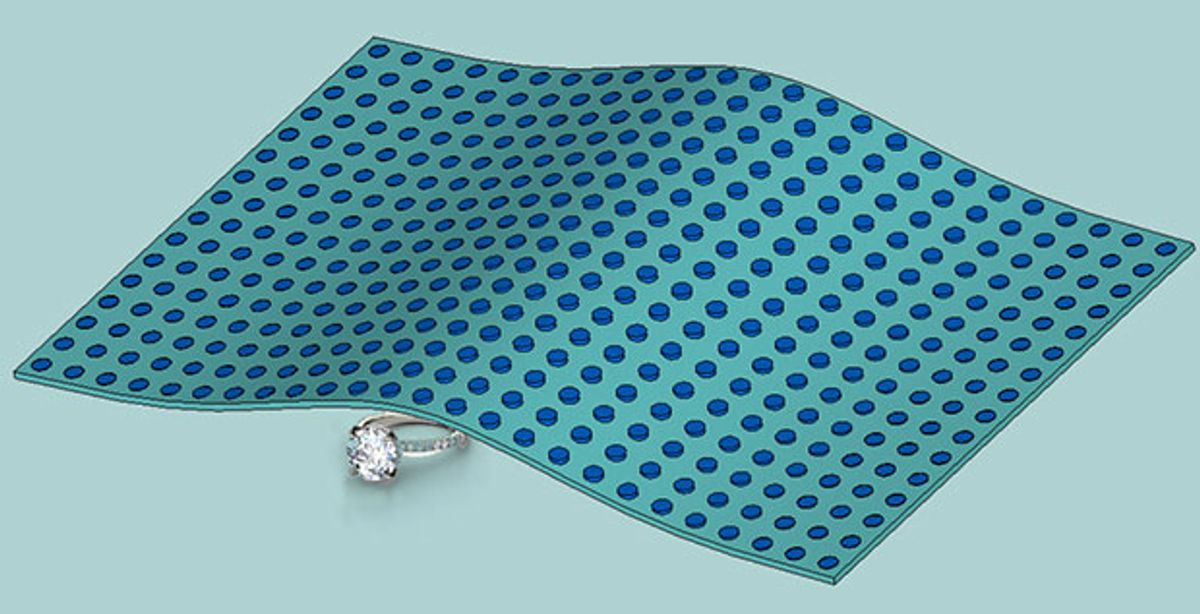Unless you’re a teenage wizard, making things invisible involves some challenges—cloaking devices tend to be bulky and absorb some of the light they’re trying to reroute. Now a new design may lead to invisibility cloaks that are thinner and don’t lose brightness, rendering them more practical for certain uses.
Researchers at the University of California, San Diego, designed a carpet cloak, a device that covers an object and scatters light as if it’s hitting a flat surface instead of something three-dimensional.
The cloak is very thin—only about a tenth the size of the wavelength of the photons it’s scattering—and lossless, so there’s no dimming to give away the presence of the cloak. The scientists achieved this by using a new design and different materials. Instead of a periodic structure of metal, which absorbs light, they use two dielectric materials, a Teflon substrate studded with cylinders made of a ceramic. The ceramic has a high refractive index, and the Teflon has a low refractive index. When combined, they create a metamaterial, capable of bending light in unusual ways.
The team also varied the height of the cylinders by a small amount, in a pattern devised by their computer. The different heights change the phase of the light bouncing off different parts of the cloak to mimic the phase it would have if it were bouncing off a flat surface. Despite the effect of those height differences, the thicknesses involved are so tiny that the researchers consider this a two-dimensional metasurface, a newer version of metamaterials that has recently generated some interest. “One tenth of the wavelength is essentially like 0 in height,” says Boubacar Kante, assistant professor of electrical and computer engineering at UCSD, who led the work, which appears in the latest issue of Progress in Electromagnetics Research.
This particular cloak exists only in computer simulation, though the team is working on building a physical version, Kante says. It was designed for the microwave range, with a 0.6 cm thickness to handle 6 cm wavelengths, simply because those larger dimensions made it easier to work with. A cloak could be made for visible light but would have to be much thinner. Because the shortest wavelength the human eye perceives is slightly less than 400 nm, a cloak would have to be less than 40 nm thick, a dimension easily achievable by the photolithography processes used for making computer chips. But Kante points out that microwave cloaks could be useful for the military, to hide objects from radar working at such wavelengths.
One tradeoff—the range of wavelengths covered is very narrow. Changing the design to cover a broader range makes the material more lossy.
Kante says the design might have other uses besides invisibility. For instance, it could shield antennas in cell towers from each other, lowering crosstalk. Or it could make better solar concentrators, which focus sunlight to run steam turbines.
Neil Savage is a freelance science and technology writer based in Lowell, Mass., and a frequent contributor to IEEE Spectrum. His topics of interest include photonics, physics, computing, materials science, and semiconductors. His most recent article, “Tiny Satellites Could Distribute Quantum Keys,” describes an experiment in which cryptographic keys were distributed from satellites released from the International Space Station. He serves on the steering committee of New England Science Writers.



